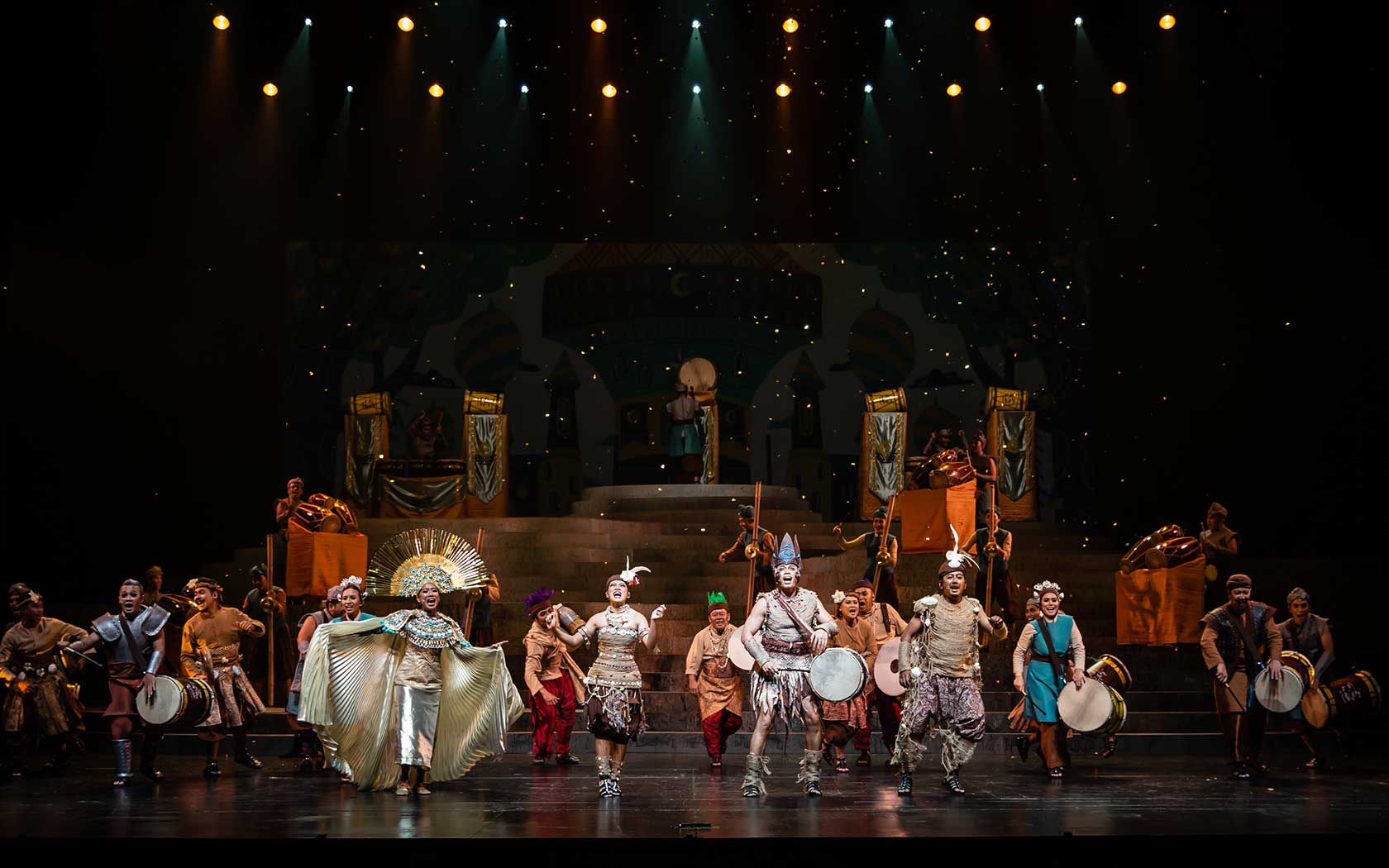We use cookies to improve your experience on our site. To find out more, read our data protection and cookie policy. By using our site, you agree to our use of cookies. Close to continue browsing.
Esplanade Presents
Kecak: Sanghyang Dedari
14 Apr 2024, Sun, 6.30pm
(Intermission: None)
Esplanade Forecourt Garden
This event is over.

This event is over.
Witness the graceful ceremonial dances and frenzied interlocking vocals in this performative version of the sanghyang and kecak, at the Balinese Temple Stage at the Esplanade Forecourt Garden.
An ancient ceremony to restore balance and bring peace
In the most holy ground of the temple, preparations are made for a visit from the goddesses – incense is burnt, the smoke is waved over a group of young girls. Aged 7 – 12, these girls have not reached puberty and are considered the personification of purity. The intense smoke invokes the spirits to enter their bodies; they become the embodiment of goddesses (dedari) and have temporary divine powers. The girls lose consciousness, dancing carelessly and acting playfully, performing dangerous acts such as walking through fire or climbing 4-metre-high bamboo poles fearlessly.
The Sanghyang Dedari ritual can be traced back to ancient times, it is performed to show gratitude to the gods and goddesses, repel illness; as a prayer for healthy crops and a successful harvest, for protection from rice pests among other problems.
Sanghyang Dedari is a social and communal event where people’s participation is the essence of the ritual. Individuals surrender their problems, and afterwards any social conflict or imbalance is cured by the presence and possession of the goddesses, even emotional instabilities are restored to neutral. At the end of the ceremony, the dancers are sprinkled with holy water by the priest; they are revived and regain their consciousness, having no recollection of the acts that they performed.
The ceremony is not accompanied by the usual gamelan, but by a group of adults chanting and singing (gending), alternating with a group of males clad in checkered cloth around their waist, who make the formation of a circle, standing or sitting while shouting ‘cak!’ in a rhythmic manner (kecak). The dancing and singing produces spiritual strength, and the intention to carry out the ceremony is granted by the gods.
Eka Suwara Santhi
Eka Suwara Santhi was established in 2014 and is Singapore’s only Balinese dance group. It performs a variety of Balinese dances ranging from traditional and ancient pieces to modern choreographies. Eka Suwara Santhi also conducts dance and movement workshops from basic to advanced levels. They also conduct lectures and talks on Balinese dance and its cultural and historical associations.
Gamelan Pinda Sari
Led by maestro drummer I Nyoman Kariasa from the Indonesian Institute of Fine Arts (ISI) in Denpasar, Bali, Gamelan Pinda Sari is well-known in Bali for its exuberant playing style. The musicians are all villagers from Pinda in Bali and have performed in Singapore on several occasions.
Sanggar Langlang Jagat
Sanggar Langlang Jagat was set up by I Made Suteja, a well-known dancer in Batuan, Bali. Also known as the Kaki Bebek House group after Suteja's home studio, Sanggar Langlang Jagat performs traditional Balinese dances in the classic Batuan style. The group also conducts classes and workshops for adult learners and children.
14 Apr 2024, Sun
6.30pm


Become a member

Great arts experiences begin with Esplanade&Me. Join this membership to enjoy ticket specials on shows at Esplanade, early bird specials, promotions at Esplanade Mall, unlimited access to Offstage and more.

Never miss a show again. Get on our mailing list.
- Kecak: Sanghyang Dedari










